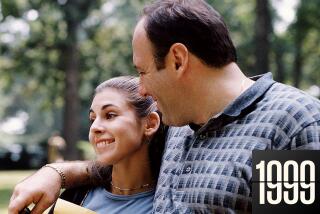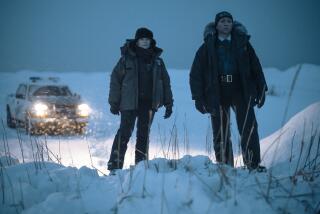Critic’s Notebook: ‘Treme’s’ collection of beautiful moments
Every city has its own singular character — just ask Minneapolis about St. Paul — but there is perhaps no American city as singularly singular, as stubbornly exotic, as attached to its difference as New Orleans, that funky little cosmopolis set down in a bowl between Lake Pontchartrain and the Mississippi River. A blighted town with a tourist economy, stuck in time and outside of time, conservative and anarchic, vulnerable and violent, it is the City That Care Forgot but sometimes also the City That Forgets to Care.
“Treme,” the marvelous, musical New Orleans-set HBO drama whose second season began April 24, takes its form from the city’s substance; it does not so much present a point of view as embody a perpetual argument. Created by David Simon and Eric Overmyer, who have “The Wire” in their shared past, it is romantic and naturalistic at once, as dreamy and earthy as the place in which it takes place — a place where when you die, they strike up the band. I love it as much as anything now on television.
The first season, which opened three months after Hurricane Katrina and “the federal flood,” showed a city shaking itself awake after a blow to the head, its natives finding their old place within the new landscape, or new ones outside it. (Expatriates are a part of the story too.) If last year’s “Treme” often played to the Crescent City’s fairyland side — its beads and feathers, nightclubs and parades — darker tones arrived early this year. It is now 14 months after the storm, and the criminals have come home. And where last season exploded out of the gate with color and noise, this one began contemplatively, almost cautiously, on All Saints’ Day, with a young boy playing a tentative first few notes of “When the Saints Go Marching In” and familiar characters in a graveyard visiting their dead; it ended with a body in the street. The episode was titled “Accentuate the Positive.”
For we who are not in or of New Orleans, “Treme” can be a trip to another world, but it is no mere travelog. Nor is it a drama of issues, even though it is grounded in the city’s actual problems, politics and possibilities. If the characters have been crafted to stand for certain aspects of its practical and cultural life, they are written and played as human first — the best of them sometimes difficult, the worst of them something less than evil. Even at its most expository or instructional or didactic, “Treme” stays real, because its people talk as people do. It helps also that the producers don’t bother to explain every local reference or cameo, which can run so thick that the Times-Picayune runs a weekly “‘Treme’ Explained” column.
It is a beautiful show, by which I do not mean it is pretty. “Pretty” has its place here — it’s the word of highest praise among the elaborately costumed Mardi Gras Indians — and the show does look good; indeed, it can make you cry even with the sound down. But beauty, in the sense of transcendent sensation, sweet or bittersweet, is the series’ underlying theme. The need for it, and the pursuit of it, is what keeps these characters hanging around.
Among other things, “Treme” is about making things — food, music, costumes, the spaces where the wonderful might come to pass: a bar, a yard, even a radio show. (And it is more often about the price one pays to do it than the price one gets for doing it: “Play for that money, boys,” says Wendell Pierce’s itinerant trombonist, even when it isn’t a question of money.) If there’s a slant to the series, which does strive not to judge — or failing that, to spread the judgment around — it’s that its heart is with the artists, even in their disarray. But it would be: It’s a work of art.
“There’s so many beautiful moments here,” Steve Zahn’s fervid disc jockey said to Kim Dickens’ worn-out chef at the end of last season, pleading with her not to leave New Orleans.
“They’re just moments,” she replied. “They’re not a life.”
Maybe not “a life” but maybe, this series rich in beautiful moments would argue, life all the same. As John Goodman’s angry author-blogger told his English class last season, “Don’t think in terms of a beginning and an end. Unlike some plot-driven entertainments, there’s no closure in real life. Not really.” He was talking about a book — Kate Chopin’s 19th-century novel of New Orleans, “The Awakening” — and he was talking about himself: Like Chopin’s protagonist, he was about to drown himself, having lost his feeling for the city he loved. But he was also clearly speaking for this show itself: not a plot-driven entertainment but moving and various and messy, with no more and no less of a story than a big muddy river or a sudden street parade.
More to Read
The complete guide to home viewing
Get Screen Gab for everything about the TV shows and streaming movies everyone’s talking about.
You may occasionally receive promotional content from the Los Angeles Times.







